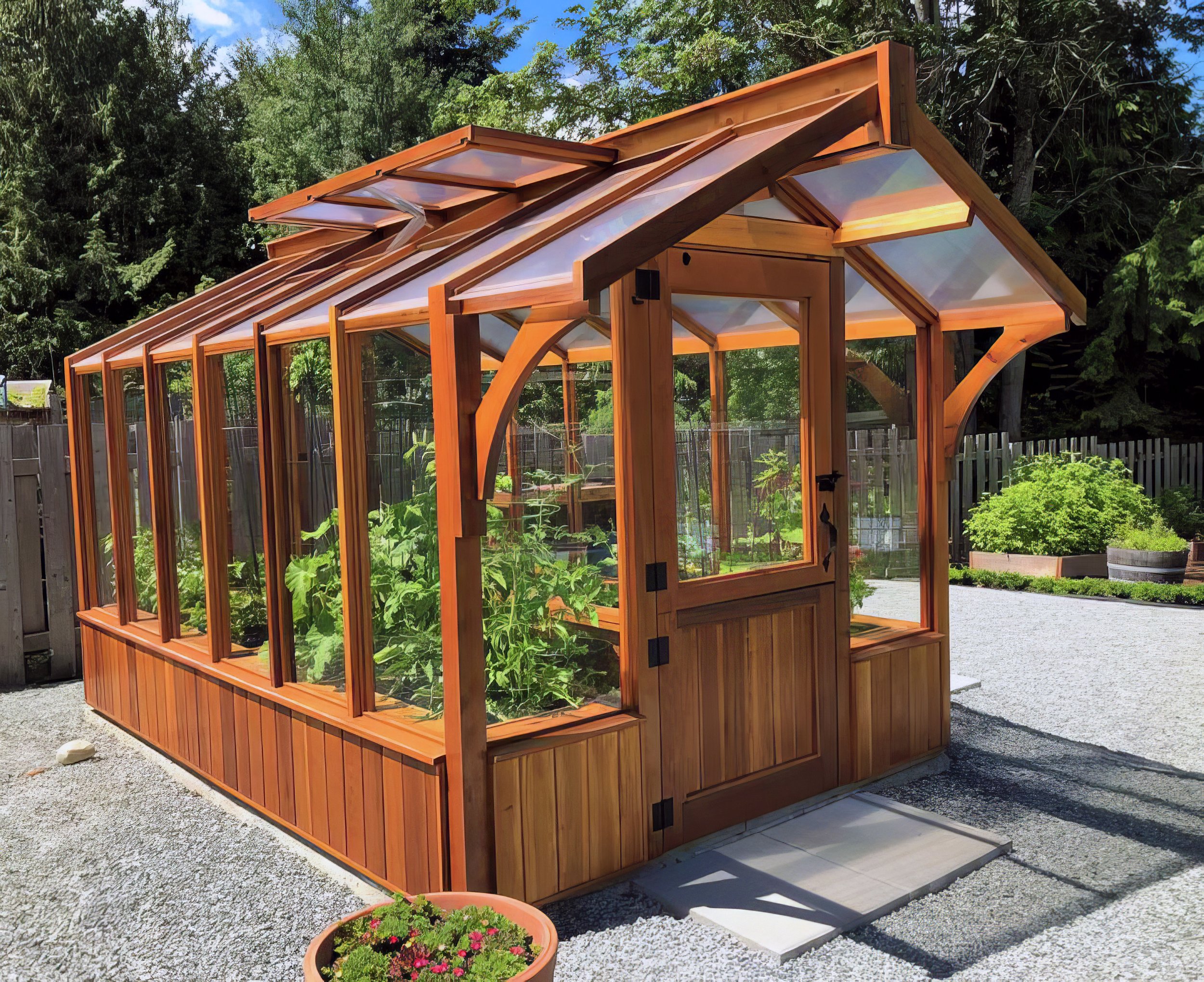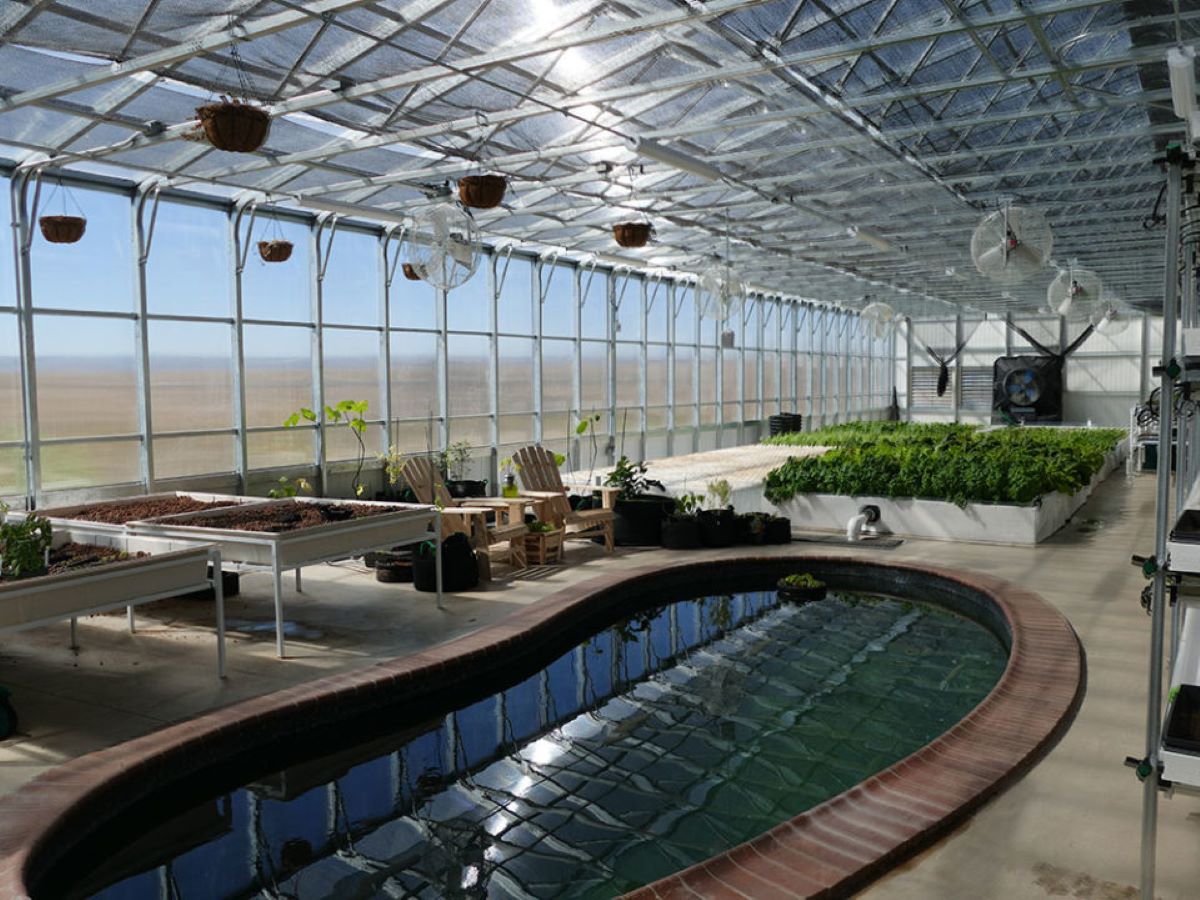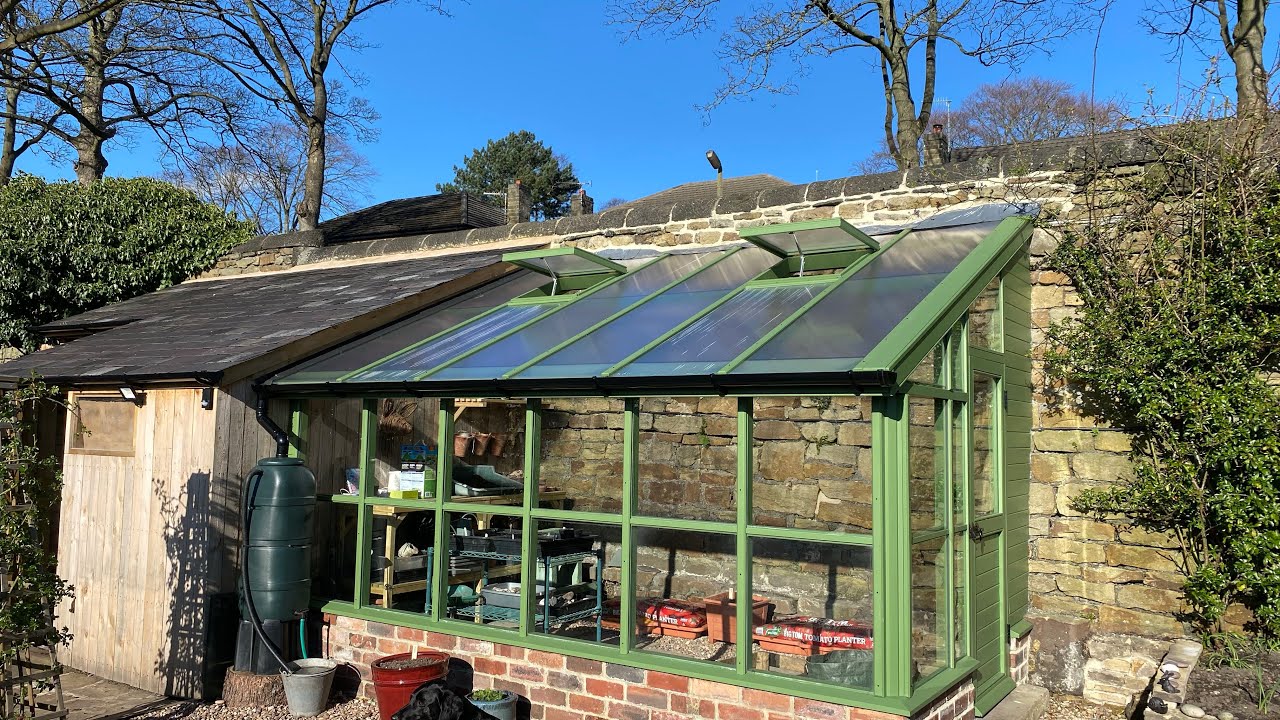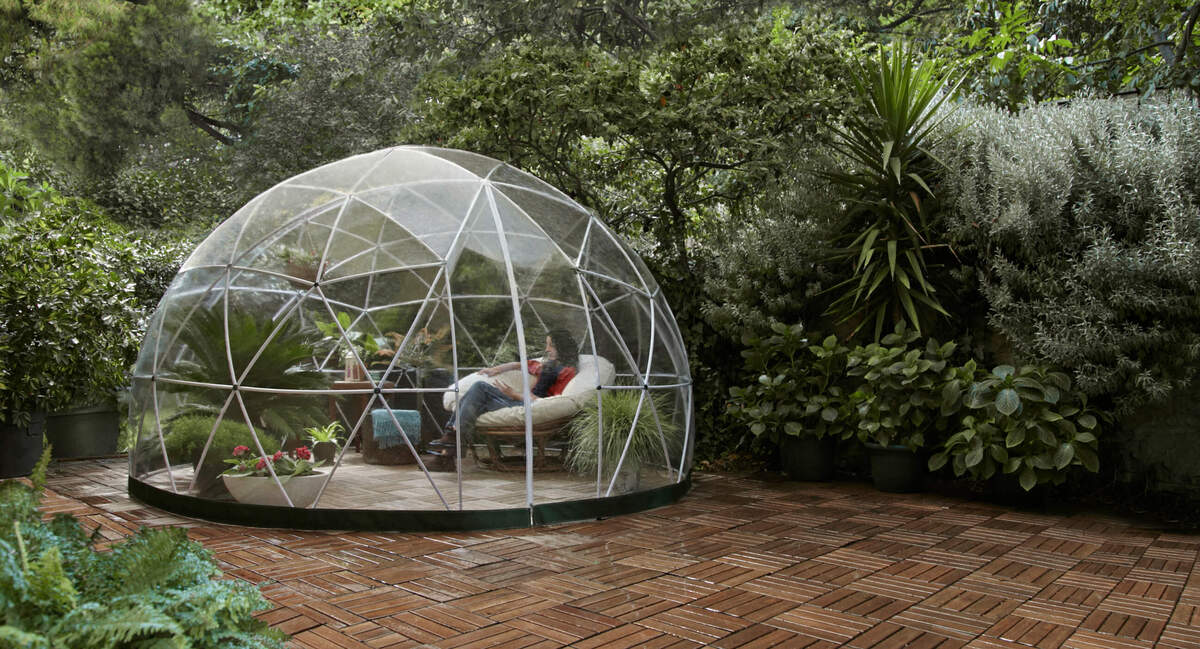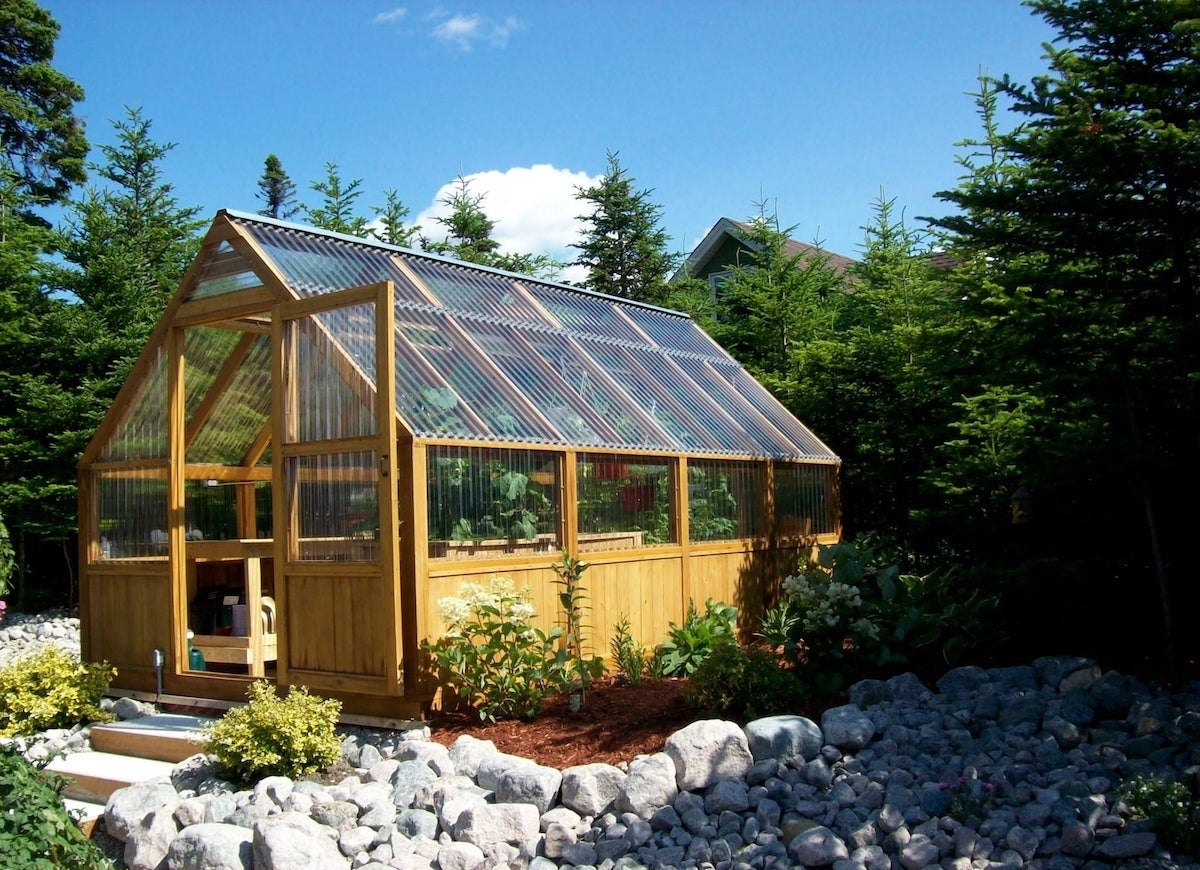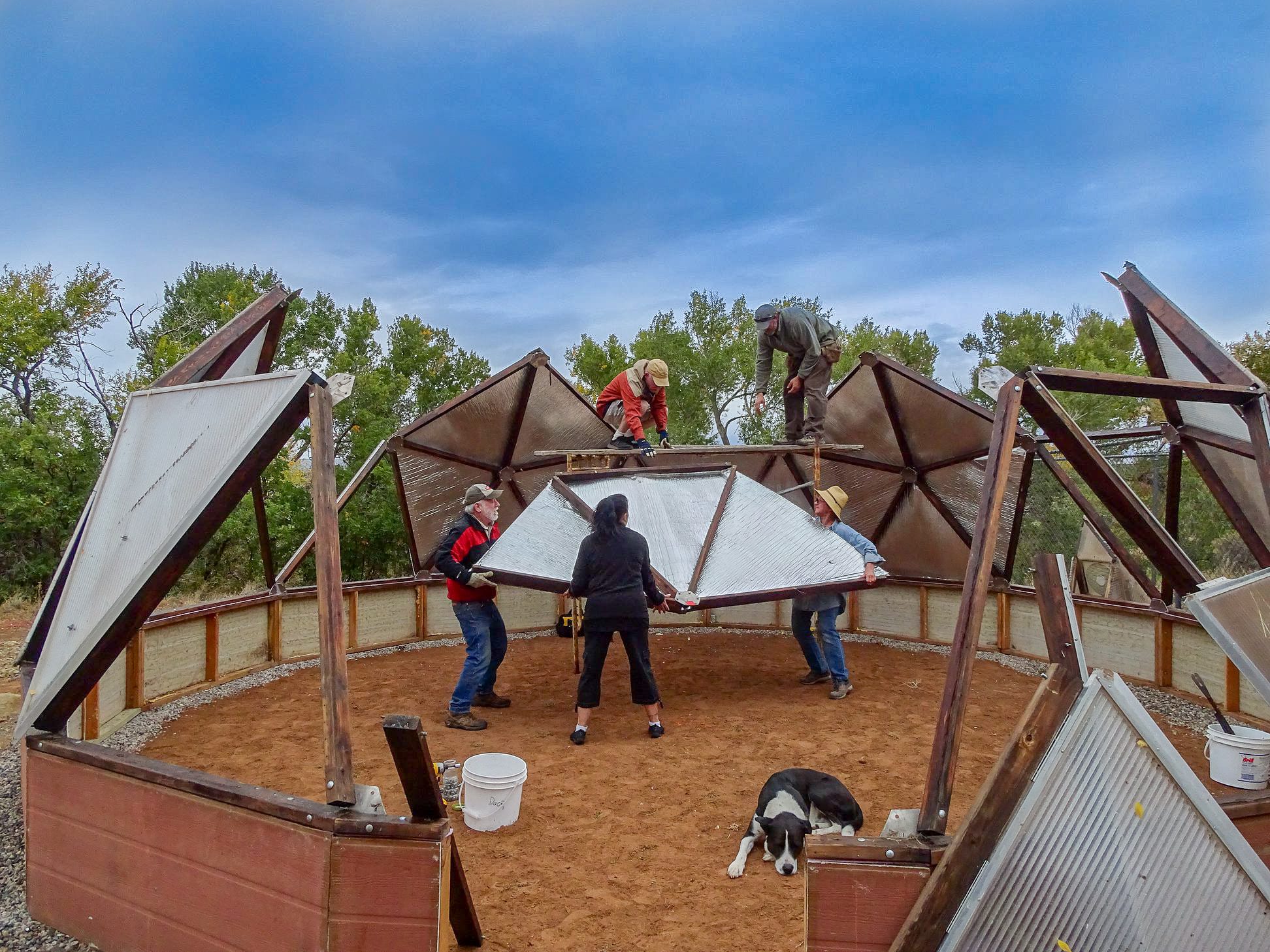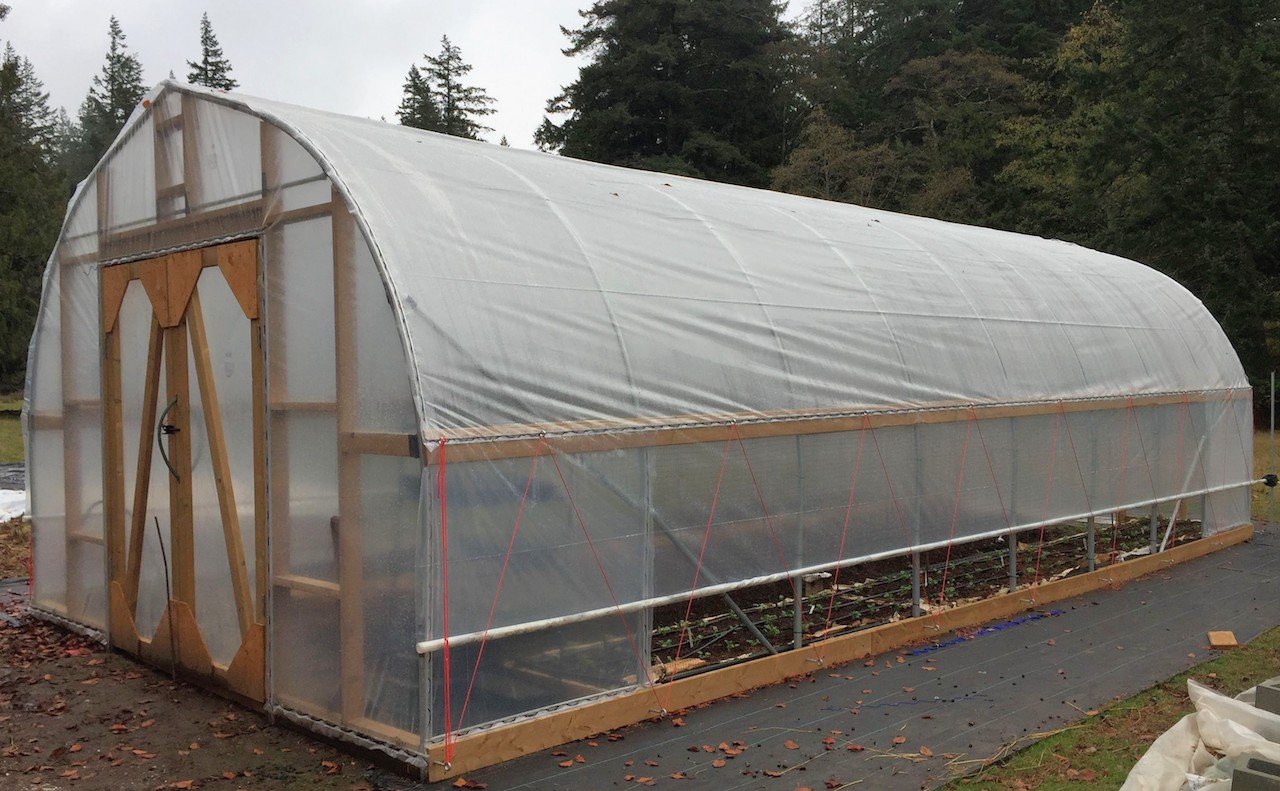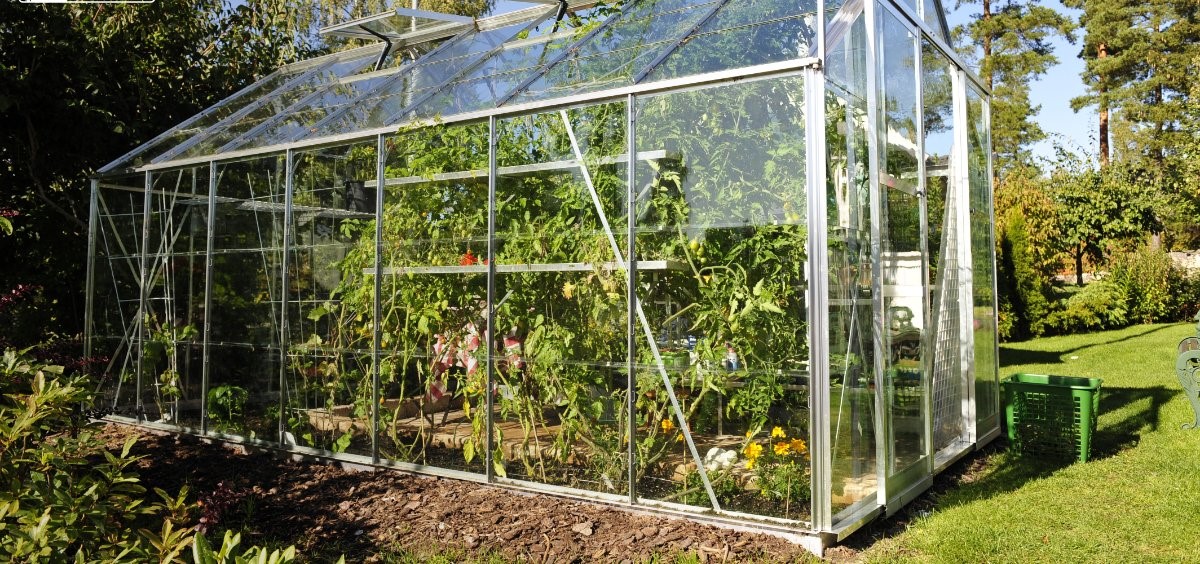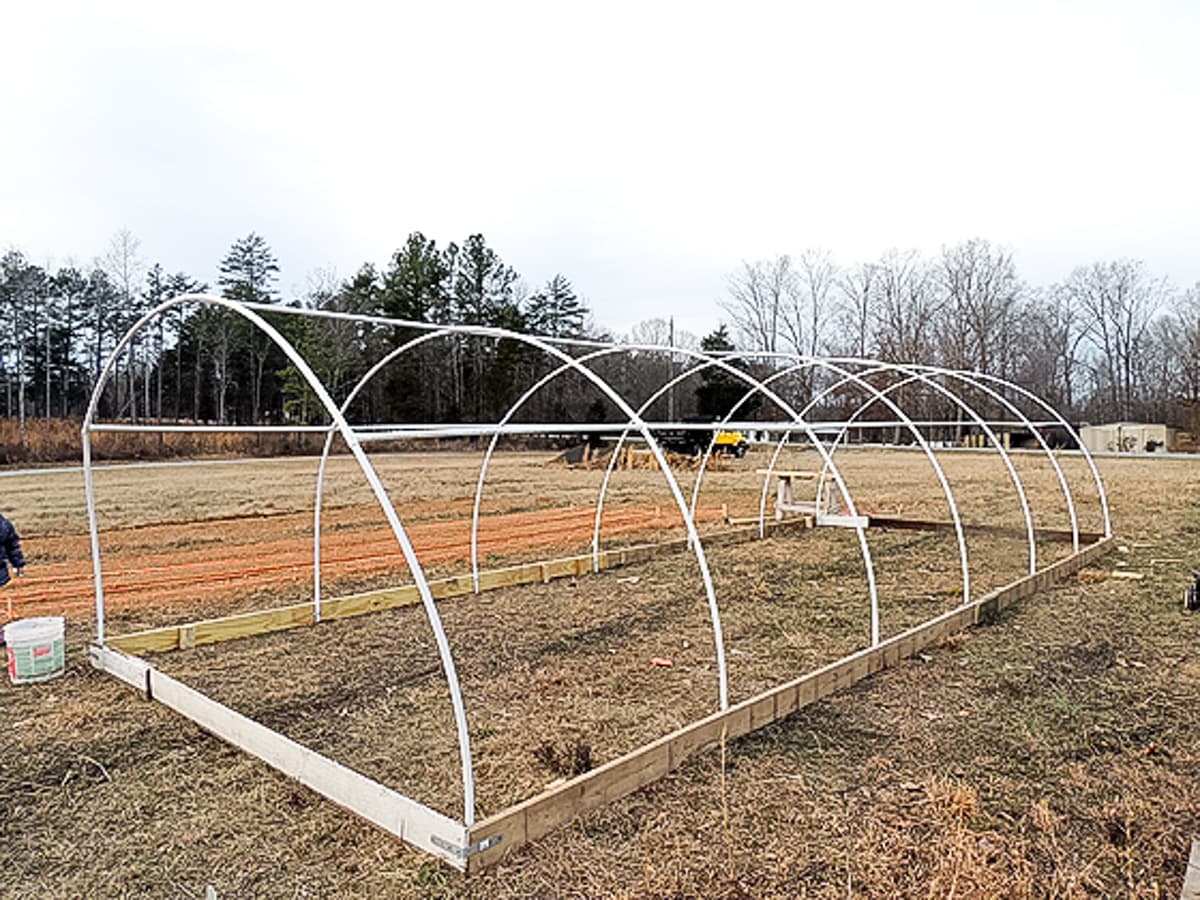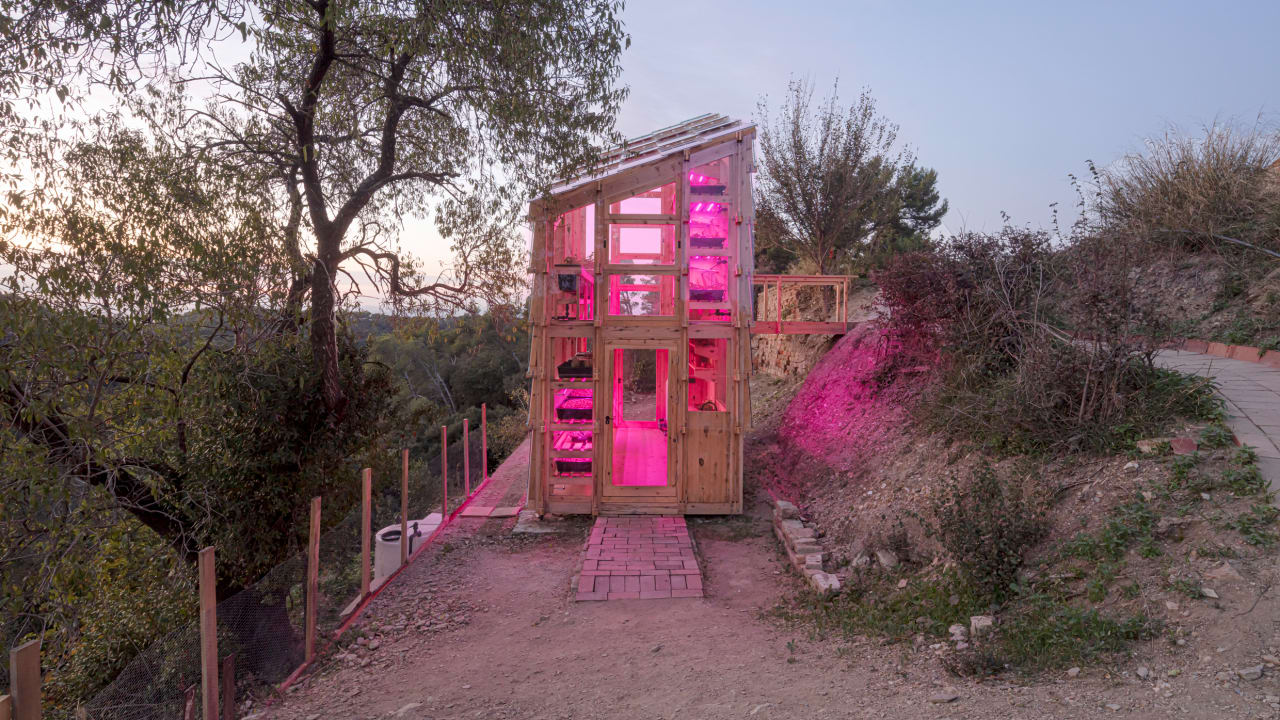Home>Gardening Techniques>DIY Projects>How To Build A Year-Round Greenhouse
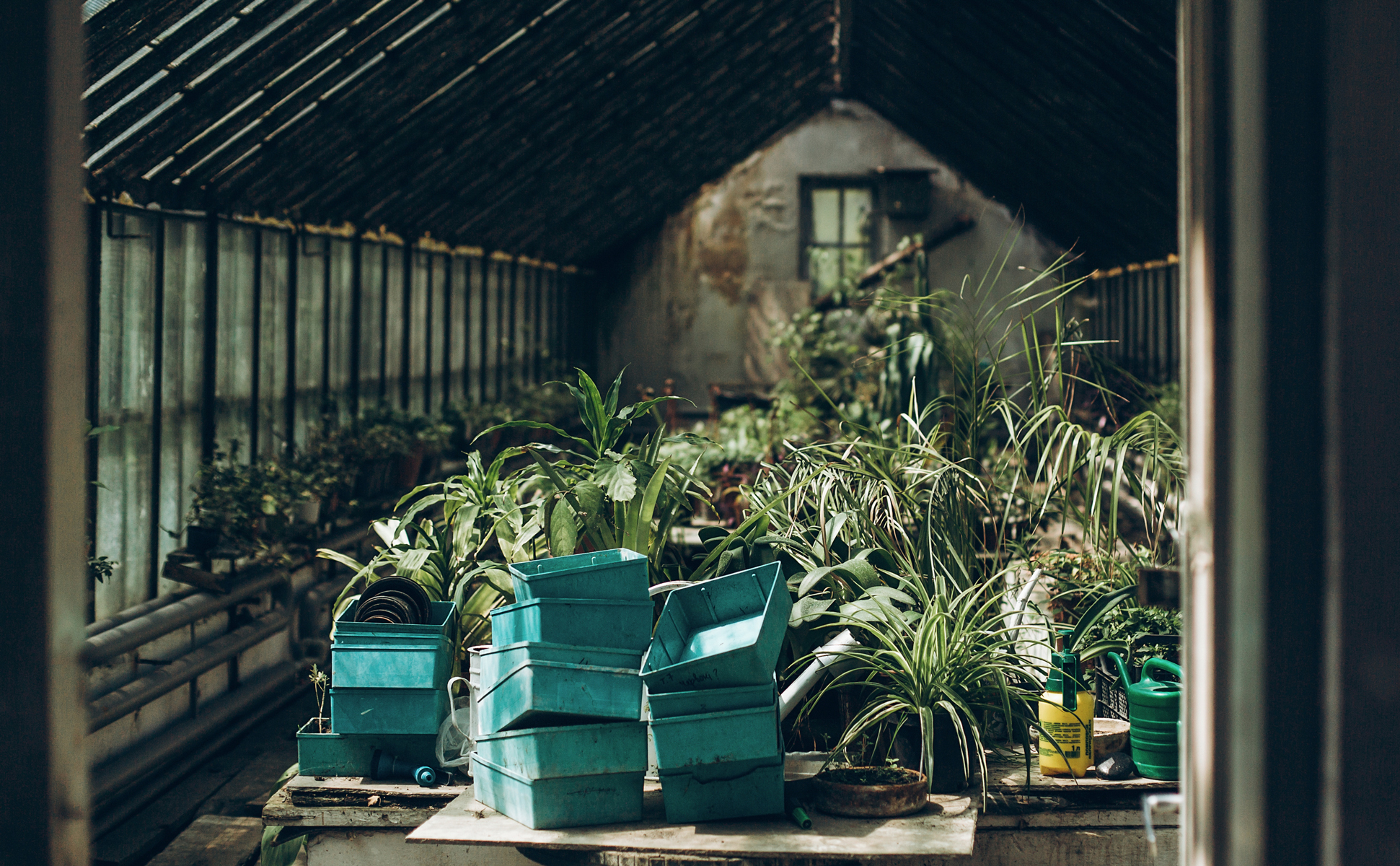

DIY Projects
How To Build A Year-Round Greenhouse
Modified: January 22, 2024
Learn how to build a year-round greenhouse with this DIY project guide. Create your own sustainable garden with step-by-step instructions.
(Many of the links in this article redirect to a specific reviewed product. Your purchase of these products through affiliate links helps to generate commission for Chicagolandgardening.com, at no extra cost. Learn more)
Table of Contents
- Introduction
- Benefits of a Year-Round Greenhouse
- Choosing the Right Location for Your Greenhouse
- Designing and Planning Your Greenhouse
- Selecting the Right Materials
- Building the Foundation
- Constructing the Frame
- Installing Walls and Roofing
- Proper Ventilation and Air Circulation
- Setting Up Irrigation Systems
- Installing Heating and Cooling Systems
- Choosing the Right Plants for Year-Round Growth
- Maintaining and Managing Your Greenhouse
- Troubleshooting Common Issues
- Conclusion
Introduction
Welcome to the world of DIY greenhouse projects! Building a year-round greenhouse is an exciting endeavor that allows you to indulge in your passion for gardening while overcoming seasonal limitations. By designing and constructing your own greenhouse, you can create an ideal environment for your plants to thrive, regardless of the weather outside.
Whether you are a seasoned gardener looking to extend your growing season or a beginner eager to experiment with year-round cultivation, this comprehensive guide will equip you with the knowledge and inspiration necessary to build your own year-round greenhouse.
Imagine harvesting fresh, homegrown produce even during the cold winter months, or cultivating vibrant flowers and herbs throughout the year. A year-round greenhouse provides the perfect solution, ensuring a consistent supply of fresh and organic crops while allowing you to nurture your green thumb.
In this guide, we will explore the myriad benefits of a year-round greenhouse and guide you through the process of location selection, design planning, material selection, construction, and maintenance. We will also delve into the various systems, such as ventilation, irrigation, heating, and cooling, that are essential for maintaining optimal growing conditions.
Embarking on a DIY greenhouse project not only allows you to personalize your structure according to your needs and preferences but also offers a cost-effective alternative to purchasing a pre-built greenhouse. By following the steps outlined in this guide, you will be well on your way to creating a functional, efficient, and beautiful year-round greenhouse.
So, if you’re ready to take your gardening endeavors to the next level and embrace the joy of year-round cultivation, let’s dive in and explore the exciting world of DIY greenhouse projects!
Benefits of a Year-Round Greenhouse
A year-round greenhouse offers a multitude of advantages for gardeners and plant enthusiasts. By providing a controlled environment, these structures enable you to overcome the limitations of seasonal changes and extend your growing season. Here are some key benefits of having a year-round greenhouse:
- Extended Growing Season: With a year-round greenhouse, you can grow plants throughout the entire year, regardless of the outside weather conditions. This means you can start seeding earlier in the spring and continue growing vegetables, herbs, and flowers well into the fall or even winter.
- Protection from Extreme Weather: A year-round greenhouse acts as a protective shield against harsh elements such as frost, high winds, heavy rain, and excessive heat. Your plants will be shielded from sudden temperature fluctuations, allowing them to thrive in a stable, controlled environment.
- Increased Crop Yield: The controlled environment of a greenhouse provides optimal conditions for plant growth. By maintaining ideal temperatures, humidity levels, and providing adequate light, you can significantly increase your crop yield. This means more fruits, vegetables, and herbs to enjoy throughout the year.
- Opportunity to Grow Exotic Plants: A year-round greenhouse opens up possibilities for cultivating exotic and delicate plants that are not well-suited to the local climate. You can grow tropical fruits, rare orchids, and other unique species that require specific conditions to thrive.
- Protection from Pests and Diseases: Greenhouses create a barrier between your plants and pests, such as insects and rodents, preventing them from causing damage. Furthermore, the controlled environment reduces the risk of diseases by minimizing exposure to pathogens present in the soil or carried by pests.
- Cost Savings and Sustainability: By growing your own produce year-round, you can reduce your grocery bills and have access to fresh, organic food. Additionally, greenhouse gardening promotes sustainability by reducing the need for long-distance transportation of produce and minimizing pesticide use.
- Personalized and Creative Space: Building and designing your own year-round greenhouse allows you to create a personalized and aesthetically pleasing space. You can incorporate unique features, such as seating areas, vertical gardening systems, or decorative elements, to make your greenhouse a truly delightful retreat.
With these numerous benefits, it’s no wonder that year-round greenhouses have gained popularity among gardening enthusiasts. Their ability to provide a controlled environment, protect plants from harsh weather conditions, and enable continuous cultivation make them an invaluable asset for any avid gardener.
Choosing the Right Location for Your Greenhouse
Selecting the ideal location for your year-round greenhouse is crucial for its success. The right spot will ensure optimal sunlight exposure, protection from harsh elements, and convenient access. Here are some factors to consider when choosing the location:
- Sunlight: Place your greenhouse in an area that receives ample sunlight throughout the day. Ideally, it should have south-facing exposure to maximize sunlight exposure during the winter months. Avoid shaded areas or places where nearby structures or trees may cast shadows on your greenhouse.
- Accessibility: Consider the convenience of accessing your greenhouse. Locate it near a water source for easy irrigation and gardening tasks. Also, ensure that it’s easily accessible from your house to facilitate regular monitoring and maintenance.
- Wind Exposure: Be mindful of the prevailing wind patterns in your area. Strong winds can damage or even dismantle a greenhouse. Choose a location that offers some natural wind protection, such as a wall, fence, or existing vegetation to create a windbreak and shield your greenhouse.
- Drainage: It’s essential to select a site with good natural drainage. Avoid low-lying areas prone to waterlogging, as excess moisture can lead to root rot and other problems. If necessary, consider implementing drainage systems or elevating the greenhouse on a slightly raised platform.
- Privacy: Depending on your preference, you may want to place your greenhouse in an area that offers some privacy. Think about how the greenhouse will fit within the overall landscape and if you want it to be visible or tucked away.
- Future Expansion: Consider the potential for future expansion or additional structures. Leave enough space around the greenhouse to allow for future expansion if you decide to increase its size or add ancillary structures like storage sheds or potting areas.
- Local Regulations and Codes: Familiarize yourself with any local zoning regulations or building codes that may affect the placement of your greenhouse. Ensure compliance with setbacks, maximum height restrictions, and any permits required for construction.
By carefully choosing the location for your year-round greenhouse, you can set a solid foundation for a successful and thriving growing space. Take into account factors such as sunlight exposure, accessibility, wind protection, drainage, and future expansion potential to ensure that your greenhouse provides the best possible environment for your plants.
Designing and Planning Your Greenhouse
Designing and planning your year-round greenhouse is a crucial step that will determine its functionality, efficiency, and aesthetic appeal. By carefully considering your needs and preferences, you can create a greenhouse that suits your gardening goals perfectly. Here are some key aspects to consider when designing and planning your greenhouse:
- Size and Layout: Determine the size of your greenhouse based on the available space and the amount of gardening you envision. Consider the types of plants you want to grow and their space requirements. Create a layout that allows for efficient movement, organization, and future expansion possibilities.
- Orientation and Shape: Choose the orientation and shape of your greenhouse based on factors like sun exposure and visual appeal. A south-facing orientation maximizes sunlight intake, while a gable or even span roof shape allows for better air circulation and water drainage.
- Structural Materials: Select the materials for your greenhouse structure carefully. Popular options include glass, polycarbonate panels, or polyethylene film. Consider factors such as durability, insulation properties, cost, and aesthetic preferences when choosing the best material for your greenhouse.
- Foundations and Flooring: Depending on the type of greenhouse and the soil conditions, you may need to construct a foundation. A concrete or gravel base provides stability and proper drainage. Choose flooring materials that are easy to clean and can withstand moisture and foot traffic.
- Windows and Ventilation: Adequate ventilation is crucial to maintain optimal temperature and air quality inside your greenhouse. Plan for the installation of windows, vents, or fans to facilitate proper air circulation. Consider automatic ventilation systems that can be controlled by temperature or humidity sensors.
- Water and Electricity: Determine your water and electricity requirements. Plan for convenient access to a water source for irrigation and plumbing, as well as electrical outlets for lighting, heating, or other systems. Consult a professional if you are unsure about the electrical needs and regulations to ensure safety.
- Shelving and Benches: Incorporate shelving, benches, or potting tables to maximize space utilization and organization within your greenhouse. Adjustable shelves or benches provide flexibility and accommodate plants of different sizes. Consider adding hooks or hanging systems for vertical gardening or hanging baskets.
Take the time to sketch out your greenhouse design and make adjustments as needed. Consider consulting with experienced gardeners or greenhouse suppliers who can offer valuable insights and recommendations based on their expertise. A well-designed and carefully planned greenhouse will provide a functional and visually appealing space, enhancing your gardening experience and the success of your plants.
Selecting the Right Materials
Choosing the right materials for your year-round greenhouse is essential for its durability, efficiency, and overall performance. The materials you select will determine the insulation, light transmission, structural integrity, and maintenance requirements of your greenhouse. Here are some factors to consider when selecting materials:
- Glass: Glass is a traditional and visually appealing option. It provides excellent light transmission, durability, and insulation. However, it can be costly and more prone to breakage. When using glass, consider tempered or double-glazed options for increased strength and insulation properties.
- Polycarbonate Panels: Polycarbonate panels are a popular choice for greenhouses. They are lightweight, durable, and offer good insulation properties. Look for panels with high light transmittance to ensure optimal plant growth. Consider multi-wall or twin-wall panels for better insulation and strength.
- Polyethylene Film: Polyethylene film, also known as greenhouse plastic, is an economical option. It is lightweight, easy to install, and offers good light transmission. However, it may have a shorter lifespan compared to glass or polycarbonate panels and may require replacement over time.
- Structural Frame: The frame of your greenhouse should be sturdy and able to withstand the elements. Common options include aluminum, galvanized steel, or treated wood. Aluminum is lightweight, resistant to corrosion, and requires minimal maintenance. Steel provides excellent strength but may require additional corrosion protection. Treated wood is a natural choice, but it needs regular maintenance to prevent decay and termite damage.
- Insulation: Proper insulation is crucial for maintaining a consistent and comfortable environment inside your greenhouse. Consider using materials such as bubble wrap, foam insulation, or thermal curtains to reduce heat loss during cold weather and prevent excessive heat buildup during hot weather.
- Glazing Sealants: Pay attention to the sealants you use to secure windows and panels. Choose high-quality glazing sealants that are weather-resistant and provide a tight seal to prevent air leaks, water ingress, and energy loss.
- Flooring: When selecting flooring materials, prioritize durability and ease of cleaning. Options like gravel, concrete, or interlocking tiles are popular choices. Ensure proper drainage to avoid water pooling and potential damage to the structure of your greenhouse.
Before purchasing materials, research and compare different options based on your climate, budget, and specific requirements. Consider the longevity, maintenance needs, insulation properties, and visual appeal of each material. If unsure, consult with greenhouse suppliers or experienced gardeners who can provide recommendations based on your specific needs and preferences.
Selecting the right materials for your year-round greenhouse will contribute to its longevity, energy efficiency, and overall functionality. By investing in quality materials, you can create a durable and resilient structure that promotes healthy plant growth and provides a pleasant gardening experience.
Building the Foundation
The foundation is a critical component of your year-round greenhouse, providing stability, level support, and proper drainage. Building a solid foundation ensures that your greenhouse remains structurally sound and able to withstand the elements. Here are some essential steps to consider when constructing the foundation:
- Site Preparation: Start by preparing the site where your greenhouse will be located. Clear any vegetation, rocks, or debris from the area. Level the ground to ensure a flat and even surface for constructing the foundation.
- Choosing the Foundation Type: Select the appropriate foundation type based on your greenhouse design and local soil conditions. Common foundation types include concrete slabs, concrete footings, or posts set in piers. Each type has its advantages and considerations, so choose the one that best suits your needs and budget.
- Excavation and Digging: If you opt for a concrete foundation, excavate the area according to the specifications of your greenhouse plans. Dig a trench for the concrete footings or slab, ensuring adequate depth and width based on local building codes and the soil composition.
- Reinforcing and Leveling: Before pouring concrete, reinforce the foundation by installing rebar or wire mesh. This will add strength and stability to the structure. Use a level and string lines to ensure that the foundation is perfectly level in all directions.
- Pouring and Curing Concrete: If using concrete, mix and pour it into the excavated area, following the manufacturer’s instructions. Use a screed or float to level the surface and remove any air pockets. Allow the concrete to cure properly before proceeding with the construction of your greenhouse.
- Anchor Points: Install anchor points or brackets in the foundation to secure the greenhouse frame. These anchor points will provide stability and prevent your greenhouse from shifting or being damaged during high winds or storms.
- Drainage Considerations: Ensure proper drainage around the foundation to prevent water accumulation. Grade the surrounding soil away from the greenhouse to allow for natural water runoff. Consider installing a french drain or drainage pipes if necessary.
- Additional Considerations: Depending on your specific needs and local conditions, you may need to consider other factors such as frost protection, insulation, or adding a perimeter skirt to prevent pests from entering your greenhouse through the foundation.
Building a solid foundation is essential for the stability and longevity of your year-round greenhouse. Follow the recommended guidelines and consult local building codes to ensure compliance and the safety of your structure. By investing time and effort into constructing a proper foundation, you can establish a solid base for your greenhouse that will support your gardening endeavors for years to come.
Constructing the Frame
The frame of your year-round greenhouse is the backbone of its structure, providing strength and support for the walls, roof, and other components. Constructing a sturdy and well-designed frame is crucial for the overall integrity and durability of your greenhouse. Here are some important steps to consider when constructing the frame:
- Review the Plans: Carefully review the greenhouse plans and make sure you understand the design and assembly instructions before starting. Familiarize yourself with the different components, connections, and joinery methods required for the frame construction.
- Gather the Materials: Gather all necessary materials, including the frame members, fasteners, brackets, and any specialized tools needed for assembly. Ensure that all materials are of high quality and suitable for the specific requirements of your greenhouse design.
- Prepare the Site: Clear the construction site of any debris or obstacles. Lay out the foundation anchor points or brackets according to the greenhouse plans, ensuring proper alignment and placement for the frame construction.
- Start with the Base: Begin constructing the frame by assembling the base or bottom rails. Secure the frame members together using appropriate fasteners and brackets, ensuring that the base is level and aligned with the foundation anchor points.
- Construct the Walls and Roof: Follow the greenhouse plans to assemble the vertical frame members, connecting them securely at the corners with sturdy fasteners or joinery methods. Install cross supports or trusses as specified to provide added strength and stability. Continue building the frame upwards to construct the walls and roof sections.
- Ensure Squareness and Alignment: Regularly check the squareness and alignment of the frame during the construction process. Use a framing square and measuring tape to ensure that the corners are at right angles and that the frame is level and plumb.
- Consider Reinforcements: Depending on your region’s climate and local building codes, you may need additional reinforcements to withstand high winds or heavy snow loads. Consult the greenhouse plans or seek expert advice to determine if extra bracing or structural elements are necessary.
- Finalize the Frame: Once the frame is fully assembled, double-check all connections and ensure they are tight and secure. Make any necessary adjustments to ensure the frame is level, square, and properly aligned before proceeding with the installation of windows, doors, and other components.
Pay attention to detail and take your time during the frame construction process. It is important to follow the plans accurately and ensure the frame is sturdy, level, and properly aligned. By constructing a solid frame, you lay the foundation for a robust and well-built year-round greenhouse that will serve you well in your gardening endeavors.
Installing Walls and Roofing
Installing the walls and roofing of your year-round greenhouse is a key step in creating a functional and protective growing space. The walls and roof not only provide insulation and weather resistance but also contribute to the overall aesthetic appeal of your greenhouse. Here are some important considerations when installing the walls and roofing:
- Choose the Proper Materials: Select the appropriate materials for your greenhouse walls and roof based on your specific needs, climate, and budget. Common options include glass, polycarbonate panels, or polyethylene film. Ensure that the materials provide sufficient light transmission, insulation, and durability.
- Follow Safety Guidelines: Prioritize safety during the installation process. Use proper safety equipment, such as gloves and goggles, when handling materials and working at heights. If necessary, seek assistance or hire professionals for tasks that require specialized skills or equipment.
- Start with the Walls: Begin by installing the wall materials, whether it is glass, polycarbonate panels, or greenhouse plastic. Follow the manufacturer’s instructions and the greenhouse plans for secure attachment, sealing, and weatherproofing. Ensure that the walls are properly aligned and sealed to prevent air leaks and water ingress.
- Consider Insulation: Install insulation materials between the frame and the walls to improve energy efficiency and maintain a more stable temperature. This is particularly important for colder climates or if you plan to heat your greenhouse during the winter months.
- Install the Roof: Proceed with installing the roof materials, whether it is glass, polycarbonate panels, or greenhouse plastic. Pay attention to proper sealing at the joints and edges to prevent water leakage. Ensure that the roof is adequately sloped to facilitate rainwater runoff.
- Provide Ventilation: Install windows, vents, or mechanical ventilation systems to ensure proper air circulation and temperature control inside the greenhouse. These ventilation mechanisms help prevent excessive heat buildup and humidity, promoting healthier plant growth.
- Consider Shade Structures: Depending on your climate, you may need to install shade structures or shading materials to protect your plants from excessive heat and sunlight. This is particularly important in regions with intense summers or if you are growing heat-sensitive plants.
- Ensure Proper Sealing: Verify that all joints, edges, and openings are properly sealed to prevent heat loss or drafts. Use weather-stripping, caulk, or specialized greenhouse sealing products to seal any gaps or openings in the walls or roof.
Take your time during the installation process and follow the manufacturer’s instructions and greenhouse plans diligently. Proper installation of the walls and roofing ensures that your year-round greenhouse provides a protected and controlled environment for your plants to thrive in. By paying attention to details and utilizing suitable materials, you create a functional and visually appealing space for all your gardening endeavors.
Proper Ventilation and Air Circulation
Adequate ventilation and air circulation are crucial for maintaining a healthy and thriving environment inside your year-round greenhouse. Proper airflow helps regulate temperature, humidity levels, and prevents the buildup of pests and diseases. Here are important considerations to ensure proper ventilation and air circulation in your greenhouse:
- Natural Ventilation: Utilize natural ventilation by strategically placing windows, vents, and doors to allow for the easy flow of air. Position them to take advantage of prevailing winds for optimal air exchange.
- Mechanical Ventilation: Consider installing mechanical ventilation systems such as exhaust fans, intake vents, or louvers. These systems enhance air movement and provide better control over temperature and humidity levels, especially during hot or humid periods.
- Automatic Ventilation: Invest in automatic ventilation systems that are triggered by temperature, humidity, or carbon dioxide levels. These systems can open and close vents or fans based on pre-set parameters, ensuring a consistent and optimal growing environment without requiring constant manual adjustment.
- Hybrid Ventilation: Combine natural and mechanical ventilation techniques to maximize the benefits of both. By integrating mechanical systems with window or louver openings, you can achieve efficient airflow while minimizing energy consumption.
- Air Circulation: Install circulating fans or oscillating fans to ensure even distribution of air inside the greenhouse. These fans help improve pollination, prevent stagnant air pockets, and minimize temperature and humidity variations throughout the growing space.
- Shading and Cooling Strategies: Implement shading techniques, such as shade cloths or retractable blinds, to control excessive heat during the summer months. Additionally, consider incorporating cooling methods like misting systems or evaporative cooling pads to maintain a comfortable temperature inside the greenhouse.
- Monitoring and Adjustments: Regularly monitor temperature, humidity, and CO2 levels inside your greenhouse. Make necessary adjustments to the ventilation and airflow systems based on the specific needs of your plants and the external climate conditions.
- Pest Prevention: Proper ventilation helps prevent the buildup of pests and diseases by reducing humidity levels and promoting a healthy environment. Good airflow also discourages the establishment of fungal pathogens and discourages pests from settling in your greenhouse.
Remember that different plants have varying ventilation requirements, so it’s vital to understand the needs of the specific crops you are growing. Pay attention to the greenhouse’s design, orientation, and the positioning of ventilation openings to ensure proper air movement. By implementing effective ventilation and air circulation strategies, you create an optimal growing environment that fosters healthy and vigorous plants.
Setting Up Irrigation Systems
An efficient irrigation system is essential for maintaining proper hydration and optimal plant growth in your year-round greenhouse. By providing a consistent and controlled water supply, you can ensure that your plants receive the moisture they need without the risk of overwatering or underwatering. Here are important considerations when setting up your greenhouse’s irrigation system:
- Determine Watering Requirements: Understand the specific watering needs of your plants, taking into account factors such as their species, growth stage, and natural habitat. Different plants require different amounts of water, so it’s essential to tailor the irrigation system accordingly.
- Choose an Irrigation Method: There are several common irrigation methods to consider, including drip irrigation, micro-sprinklers, misting systems, or ebb and flow systems. Each method has its advantages and is suitable for different types of plants and growing setups.
- Water Source: Determine the water source for your greenhouse. Consider whether you will rely on a municipal water supply or if you have alternative options such as rainwater harvesting or well water. Ensure the water source is easily accessible and sustainable for your irrigation needs.
- Automation: Consider automating your irrigation system by using timers or moisture sensors. This ensures precise and consistent watering by providing water at the right times and adjusting for variations in moisture levels within the greenhouse.
- Zoning and Valves: If your greenhouse includes different planting zones or areas with varying watering needs, consider setting up multiple zones with separate valves. This allows you to adjust watering schedules and volume based on the specific requirements of each zone.
- Distribution System: Determine the best distribution system for delivering water to your plants. This can include using polyethylene tubing, drip lines, micro-sprinkler heads, or customized irrigation setups based on your greenhouse layout and plant arrangement.
- Backflow Prevention: Install a backflow prevention device to ensure that irrigation water does not contaminate the main water supply. This is essential for maintaining a safe and hygienic growing environment for your plants.
- Monitoring and Maintenance: Regularly monitor and maintain your irrigation system. Check for clogs or leaks in the distribution lines and adjust watering schedules as needed throughout the year. Clear any debris or obstacles that may obstruct water flow or create uneven watering patterns.
Remember to calibrate your irrigation system to provide the correct amount of water for your plants without wasting excess water. It’s important to strike a balance between adequate hydration and avoiding waterlogged conditions. By setting up an efficient and well-maintained irrigation system, you ensure that your plants receive the necessary hydration for healthy growth and abundant yields.
Installing Heating and Cooling Systems
Proper temperature control is crucial for maintaining an optimal growing environment in your year-round greenhouse. Installing heating and cooling systems will help you regulate temperatures, ensuring the comfort and health of your plants. Here are important considerations when installing these systems:
- Heating Systems: Choose a heating system that suits your specific climate and greenhouse size. Options include radiant floor heating, forced-air heaters, electric or gas heaters, or geothermal systems. The heating capacity should be sufficient to maintain the desired temperature range during colder periods.
- Cooling Systems: Select a cooling system to manage excessive heat and maintain suitable temperatures during hotter months. Options include natural ventilation, shade cloths or blinds, evaporative cooling pads, misting systems, foggers, or air conditioning units. Consider the climate and expected heat levels in your region when choosing a cooling system.
- Thermostats and Controls: Install thermostats and controls to automate the heating and cooling systems. Programmable thermostats allow precise temperature regulation, ensuring energy efficiency and avoiding temperature fluctuations that can stress your plants.
- Insulation: Properly insulate your greenhouse to reduce heat loss during colder months and prevent excessive heat gain in warmer months. Insulate walls, roof, and even the base to create a more energy-efficient and temperature-stable environment.
- Air Circulation: Ensure sufficient air circulation, especially when using heating or cooling systems. Fans or vents can help distribute the heated or cooled air throughout the greenhouse, eliminating hot or cool spots and maintaining an even temperature.
- Energy Considerations: Opt for energy-efficient heating and cooling systems, such as those with high energy efficiency ratings or alternative energy sources like solar or geothermal systems. These choices can help reduce operating costs and minimize environmental impact.
- Monitoring and Maintenance: Regularly inspect and maintain your heating and cooling systems. Clean filters, check for leaks or malfunctions, and calibrate thermostats to ensure accurate temperature control. Proper maintenance ensures the longevity and optimal performance of your heating and cooling equipment.
- Backup Systems: Consider having backup heating or cooling systems in place to manage unexpected power outages or equipment failures. Backup generators or alternative heating methods can help maintain the desired temperature range and protect your plants during emergencies.
Remember that maintaining a suitable temperature range is essential for plant health and productivity. A well-designed and properly installed heating and cooling system will provide the necessary climate control to support your plants’ growth throughout the year and help you achieve optimal results in your year-round greenhouse.
Choosing the Right Plants for Year-Round Growth
When planning for year-round growth in your greenhouse, selecting the right plants is crucial. By choosing varieties that thrive in a controlled environment and offer extended harvests, you can enjoy a continuous supply of fresh produce and vibrant plants throughout the year. Here are important considerations when selecting plants for year-round growth:
- Crop Suitability: Consider the specific plants you want to grow and their suitability for greenhouse cultivation. Look for crops that are well-suited to the environmental conditions you can provide, such as temperature, humidity, and light levels.
- Harvest Time and Yield: Pay attention to the expected harvest time for each crop and their yield potential. Choose varieties that have shorter growing seasons or those that produce multiple harvests to ensure a continuous supply of fresh produce throughout the year.
- Space and Height: Consider the space available in your greenhouse and the height at which plants will grow. Opt for crops that fit well within your available growing area and avoid plants that may overtake the space or shade other crops excessively.
- Light Requirements: Different plants have varying light requirements. Take into account your greenhouse’s light availability and choose plants that can thrive within those conditions. Consider supplemental grow lights if needed to provide adequate lighting for plants with higher light demands.
- Temperature and Climate: Understand the temperature and climate needs of the plants you wish to grow. Some plants prefer cooler temperatures, while others thrive in warmer environments. Ensure that your greenhouse’s temperature control systems can provide the necessary conditions for your chosen plants.
- Disease and Pest Resistance: Select plants that are known for their disease and pest resistance. This reduces the likelihood of encountering common greenhouse pests and diseases, resulting in healthier and more successful crops.
- Succession Planting: Incorporate succession planting to maximize your greenhouse’s productivity. This involves planting new crops as soon as previous ones are harvested, allowing for a continuous rotation of crops and a steady supply of fresh produce.
- Personal Preference: Consider the plants you enjoy growing and consuming. Prioritize plants that you personally appreciate and are excited to cultivate. This will motivate you to care for and nurture them with dedication and enthusiasm.
Remember to keep detailed records of your planting schedules, techniques, and observations to fine-tune your selection of plants over time. Experiment with different varieties and observe their performance in your greenhouse’s specific conditions. By choosing the right plants for year-round growth, you can create an abundant and thriving greenhouse ecosystem.
Maintaining and Managing Your Greenhouse
Maintaining and managing your year-round greenhouse is essential for the continued success and productivity of your plants. Proper care and attention to various aspects of greenhouse management will ensure a healthy growing environment and optimal plant growth. Here are important considerations for maintaining and managing your greenhouse:
- Regular Monitoring: Regularly monitor the temperature, humidity levels, and overall health of your plants. Keep an eye out for any signs of pests, diseases, or nutrient deficiencies. Promptly address any issues that arise to prevent further damage.
- Watering and Irrigation: Establish a consistent watering schedule based on the specific needs of your plants. Avoid overwatering or underwatering by monitoring soil moisture levels and adjusting watering frequency accordingly. Pay attention to the irrigation system, ensuring proper functioning and preventing clogs or leaks.
- Fertilizing and Nutrient Management: Provide necessary nutrients to your plants through regular fertilization. Understand the specific nutrient requirements of different crops and adjust fertilizer applications accordingly. Monitor soil nutrient levels and pH, and conduct soil tests periodically to maintain optimal conditions.
- Pest and Disease Control: Implement appropriate pest and disease management strategies to prevent infestations and outbreaks. Regularly inspect your plants for signs of pests or diseases and take immediate action using organic or chemical control methods as needed. Remove and dispose of infected plants to prevent further spread.
- Pruning and Training: Regularly prune and train your plants to promote healthy growth and maximize productivity. Remove dead or damaged foliage, thin out overcrowded areas, and provide support or trellising for climbing plants. Pruning and training help maintain proper airflow, prevent disease spread, and improve light penetration.
- Seasonal Adjustments: Make seasonal adjustments to your greenhouse management practices. Adapt your heating, cooling, and watering schedules based on the changing environmental conditions. Modify shading strategies, ventilation, and insulation methods to accommodate seasonal temperature variations.
- Cleaning and Sanitizing: Conduct regular cleaning and sanitization of your greenhouse to minimize the risk of pests, diseases, and fungal infections. Remove debris, old plant material, and weeds. Disinfect surfaces, tools, and containers to maintain a hygienic environment for your plants.
- Record Keeping: Keep detailed records of your greenhouse activities, including planting dates, fertilization schedules, pest and disease management, and any notable observations. Maintaining accurate records helps you track progress, identify patterns, and make necessary adjustments for future success.
- Continued Learning: Stay informed about the latest greenhouse management techniques, new plant varieties, and industry trends. Attend workshops, seminars, or join gardening communities to expand your knowledge and exchange ideas with fellow greenhouse enthusiasts.
By maintaining and managing your greenhouse with dedication and care, you will create an optimal environment for your plants to thrive. Regular monitoring, proper watering, nutrient management, pest control, and other essential practices will contribute to the overall health, productivity, and longevity of your year-round greenhouse.
Troubleshooting Common Issues
Greenhouses can encounter various challenges that may affect plant health and productivity. However, with a proactive approach and timely intervention, many common issues can be resolved. Here are some common problems you may encounter in your year-round greenhouse and tips on how to troubleshoot them:
- Pest Infestations: Monitor plants regularly for signs of pests such as aphids, whiteflies, or spider mites. Use organic or chemical control methods to eliminate pests. Introduce beneficial insects like ladybugs or predatory mites to help control pest populations.
- Disease Outbreaks: Practice good sanitation and hygiene to prevent the spread of diseases. Remove and destroy infected plants to contain the problem. Maintain proper air circulation, manage humidity levels, and consider using disease-resistant plant varieties to minimize the risk of diseases.
- Inconsistent Temperature: Check the calibration of your thermostat to ensure accurate temperature readings. Insulate your greenhouse properly to maintain stable temperatures. Adjust heating or cooling systems as needed to provide the appropriate temperature range for your plants.
- Inadequate Lighting: Ensure that plants receive sufficient light by positioning them correctly within the greenhouse or using supplemental grow lights. Clean windows and panels regularly to maximize light transmission. Consider reflective materials to redirect light to lower foliage.
- Overwatering or Underwatering: Monitor soil moisture levels regularly and adjust watering frequency accordingly. Avoid waterlogged conditions by ensuring proper drainage and using well-draining soil. Provide water trays or humidity trays to increase humidity levels for plants with higher moisture requirements.
- Nutrient Deficiencies: Conduct regular soil tests to monitor nutrient levels. Adjust fertilizer application based on test results and the specific needs of your plants. Use balanced, slow-release fertilizers or organic amendments to provide essential nutrients they require.
- Growth Imbalances: Monitor plants for signs of stunted growth, leggy growth, or yellowing leaves. Adjust light levels, temperature, humidity, and nutrient balance to promote healthy growth. Prune and train plants to maintain proper shape and balance.
- Improper Pollination: Some plants may require assistance with pollination, especially in enclosed greenhouse environments. Gently shake or tap plants to release pollen, or use a small brush to manually transfer pollen from male to female flowers.
- Water Quality Issues: Test the quality of your water source for pH and mineral content. Adjust pH levels if necessary using appropriate acidifying or alkalizing agents. Consider using filtered water or rainwater if high mineral content in your water affects plant health.
- Poor Air Circulation: Ensure proper air circulation by using fans to improve airflow within the greenhouse. Prune plants as needed to prevent overcrowding and allow for better air movement. Regularly clean vents and screens to prevent blockages and maximize air exchange.
Remember that troubleshooting issues in your year-round greenhouse requires observation, patience, and a proactive approach. By promptly addressing challenges, you can maintain a healthy and thriving environment for your plants and ensure the long-term success of your greenhouse.
Conclusion
Building and maintaining a year-round greenhouse is a rewarding and fulfilling endeavor for any gardening enthusiast. By following the steps outlined in this guide, you can create a thriving and productive growing space that allows you to cultivate a wide variety of plants regardless of the season. From choosing the right location and materials to designing the layout and managing the greenhouse, each step is crucial for creating an optimal environment for your plants to flourish.
A well-designed greenhouse offers numerous benefits, including extended growing seasons, protection from extreme weather, increased crop yield, and the ability to grow a wide range of plants. Selecting suitable plants, implementing proper irrigation, ventilation, heating, and cooling systems, and effectively managing common issues will help you achieve success in your year-round greenhouse.
Remember, patience, observation, and continued learning are key to maintaining a healthy and productive greenhouse. Regular monitoring, proper care, and proactive troubleshooting will ensure a thriving and vibrant environment that yields an abundance of fresh produce and beautiful plants.
So, whether you are a seasoned gardener looking to expand your growing capabilities or a beginner seeking year-round gardening enjoyment, embrace the world of DIY greenhouse projects and embark on the journey of creating your own year-round oasis. With determination and attention to detail, you can experience the joy of cultivating a diverse array of plants and enjoying the fruits of your labor all year long.
